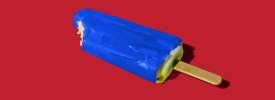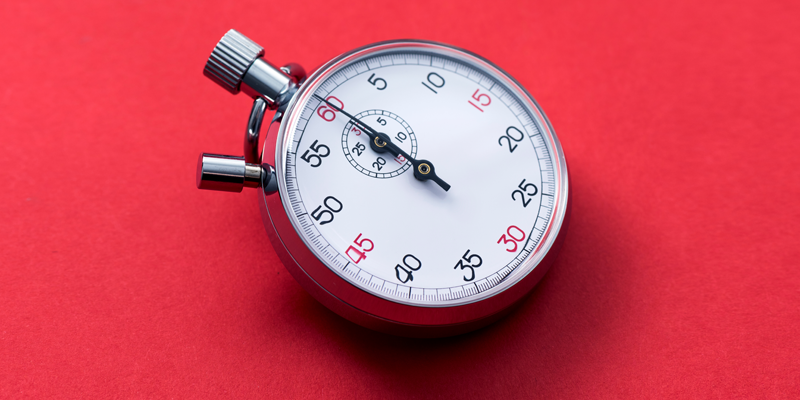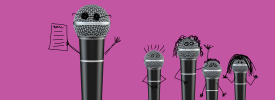
While multitasking may feel good, it can be the enemy of efficiency. Matthew Jenkin outlines some alternative methods that focus on one task at a time, resulting in a happier and more productive workforce
British entrepreneur Carl Reader thought he was running a well-oiled machine at his accountancy firm D&T. So he was shocked to discover the huge variations in the time it took team members to complete the same task. Were some of his staff just three times slower at doing their job, or was there more to it? He decided to dig a little deeper.
What he discovered was those who took longest to do a job were the ones who were multitasking the most. They were juggling emails, social media requests and phone calls at the same time as trying to complete a bigger project.
“They suffered from the ramp-down and ramp-up effect(1),” Reader claims. “When they put down a piece of work to complete another less-important task, it then took them up to half an hour to get back into the flow once they’d been distracted for even a couple of minutes. That’s where the time leak was for us.”
Multitasking is pretty much seen as a necessity in the modern world. The ability to do several things at once – even if it’s something as apparently simple as emailing and talking at the same time – is taken for granted. But the belief that engaging in several tasks at once means we are more productive is, in fact, a myth.
Research by the American Psychological Association(2) shows that what we think of as multitasking is ineffective and inefficient. That’s because the term multitasking is a misnomer. In his book, The Myth of Multitasking, Dave Crenshaw explains: “When most people refer to multitasking, they are really talking about switch tasking. No matter how they do it, switching rapidly between two things is just not very efficient or effective.”
Not only is it time-consuming, it can adversely affect your mental ability. A Stanford study(3) found multitaskers perform worse and have lower attention spans. Experiments have demonstrated(4) that when you switch your attention from one task to another, a bit of your mind is still focused on the previous task. Each time you switch back, you must remind yourself about what it was you were doing, while dealing simultaneously with the slight distraction from the other task. This can increase your cognitive load.
According to yet more studies(5), multitasking takes as much as 40% more time than focusing on one task at a time. Indeed, Gloria Mark of the University of California found it takes 25 minutes(6) to return to a task that we’ve been distracted from.
So, if multitasking isn’t working, what is the solution?
1. Monitor and plan
Carl Reader is an advocate of taking a few days to carefully monitor what you do on an average day. “By spending time jotting down the tasks I was working on, it became easier to see how little time I was focusing on what was really important,” he says.
Armed with this knowledge, Reader began seriously planning his days to make the best use of his time. “Rather than letting my day shape me, I shaped my days,” he says. “Now in the evening, for the next day, I map out times for getting specific tasks done, as well as building in free time for any other business. Since I started doing this, I’ve been astounded by how much I can get done.”
Stop multitasking and reclaim precious time every day
2. Become a ‘task opportunist’
In an article for Forbes(7), Shani Harmon and Renee Cullinan advise people to stop trying to do everything at once, and instead to become ‘task opportunists’ – seizing opportunities to match tasks with their appropriate timeframes.
First, they suggest sorting your to-dos into three ‘buckets’ (small, medium and large) based on how long each will take to complete. Once you know this, you can then optimise your day to achieve maximum productivity.
The small bucket (full of tasks that take 15 minutes or fewer, such as replying to emails) can be completed quickly in brief windows of activity.
The medium bucket (containing tasks that require some focus and concentration but are still relatively contained) can be tackled when a meeting suddenly gets cancelled or your flight is delayed.
The large bucket (which involves tasks requiring a significant amount of focus, e.g. writing a strategy document or analysing data) require you make time in your schedule – blocking out time to complete them.
As Harmon and Cullinan suggest, handling small and medium tasks in short bursts allows for even more focus on the large items, which are typically the most important.
3. ‘Chunk’ your day
Productivity expert Marianne Page suggests that true productivity occurs when we ‘block’ our day into chunks of time. For example, 90 minutes with a short break in-between each chunk. We then assign a task, part of a project or area of business to each time slot and cannot deviate from these tasks for the time given.
“First, you plan your day in advance, so somewhere subconsciously you know what you’re going to do and that you have a time limit for each ‘section’, so you start to plan in your mind,” Page explains. “The break in-between allows you to recharge and switch your focus to the next task or area of business.”
4. Embrace the Pomodoro Technique
This technique breaks tasks into bitesize chunks – usually 25 minutes each – with breaks in between. It’s a time-management technique developed by Francesco Cirillo in the late 1980s. While studying at university, Cirillo often struggled to use his study time efficiently. As the story goes, he grabbed the tomato-shaped kitchen timer the method is named after, set it for a few minutes and studied intensely for a short burst. He then rewarded himself with a break.
It worked: as a result, he found he was able to better focus on the task at hand and ultimately get more done. This simple-but-effective method has spawned many apps, from the Marinara Timer(8) to the PomoDone(9), both of which offer easy-to-use timers to help you master the technique.
5. Go deep
Developing your willpower is another skill that pays productivity dividends. In his Wall Street bestseller, Deep Work, author and professor Cal Newport celebrates the power of giving a task our undivided attention.
He calls the ability to perform deep work “the superpower of the 21st century” and defines it as “professional activities performed in a state of distraction-free concentration that push your cognitive capabilities to their limit. These efforts create new value, improve your skill and are hard to replicate.”
Newport proposes four principles for deep work – cultivating an isolated space and timeframe in which to work free from distraction, turning off social media, resisting the urge to switch tasks when we become bored and ‘draining the shallows’ – minimising the amount of time you have to spend on time-sapping smaller tasks.
What makes this an appealing technique is how it’s not an all-or-nothing approach. You don’t have to rid yourself of distraction completely. Instead, the idea is to rid yourself completely only when you are involved in deep work.
6. Be more of a hunter
Going further still is the Hunter Method, coined by Aytekin Tank, the founder of JotForm, which makes software for creating online forms. An extension of Mark Twain’s famous advice to “eat the frog” (which recommends starting the day by tackling the task you least want to do), Tank suggests focusing on just one task a day – but making completion of that task your goal.
As Lila MacLellan writes in an article for Quartz(10): “All you do is choose one task that is going to be the focus of your day, even if it doesn’t take you the whole day to complete. You write that item down on a Post-it note, stick it to your laptop and use it as your lodestar. Look to the note when your mind begins to wander to your waiting text messages, to your dry-cleaning, or to any of the ridiculous things people do when they should be working.”
Tank’s technique is inspired by early human survival tactics. “If the hunter made a successful hunt for that day, his family would eat. If not, they wouldn’t. It was that simple,” he writes(11). “He didn’t have time to check email, attend time-sucking meetings or send follow-up emails. And, he certainly didn’t have time to make to-do lists.”
Matthew Jenkin is a US-based journalist and the former editor of Guardian Careers, The Guardian newspaper’s community site for job seekers and career changers
Sources:
(1) https://en.wikipedia.org/wiki/Ramp-up
(2) http://www.apa.org/research/action/multitask.aspx
(3) http://news.stanford.edu/2009/08/24/multitask-research-study-082409/
(4) http://www.sciencedirect.com/science/article/pii/S0749597809000399
(5) http://www.apa.org/monitor/oct01/multitask.aspx
(6) http://www.nytimes.com/2013/05/05/opinion/sunday/a-focus-on-distraction.html?_r=0
(7) https://www.forbes.com/sites/harmoncullinan/2016/10/06/stop-all-multitasking-become-a-task-opportunist-instead/#79d8c5061361
(8) https://www.marinaratimer.com/
(9) https://pomodoneapp.com/
(10) https://qz.com/work/1369733/the-hunter-method-productivity-hack-can-bring-clarity-to-your-day/
(11) https://www.jotform.com/blog/to-do-list-alternative/



